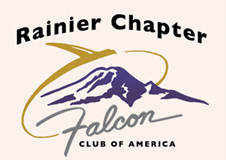Hello, Roger.
You talked about lubricating pipe threads. Would dipping the brake switch threads in brake fluid work?
I made another revision yesterday. I went to NAPA and bought two "Brake Fit Tube Nuts" (#641-3296 and #641-3322) for 69 cents each and then went to "Just Brakes" and had them attached.
brake lines.JPG
The mechanic used a tube cutter to cut the ends off the brake lines. He re-flared the lines with a "bubble flare" and said that this was the flare that my 8-inch brake lines had come with. I made a brief look at the internet about the subject and saw the comment: "Automotive brake lines are always a 45 degree double flare or a DIN (bubble) flare." Here are my bubble flares:
fittings.JPG
Here is an internet photo comparing the bubble and double flares. I need to read more about the difference between the two:
bubble flair and double flair.png
Here are what they look like attached. This eliminated two adapters. If the custom flare fittings leak, I can always get a couple of new brake lines and try the adapters.
on master cylinder.JPG







 Reply With Quote
Reply With Quote






Bookmarks